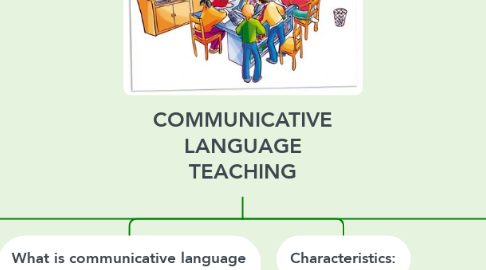COMMUNICATIVE LANGUAGE TEACHING
by Erik Espinal

1. Origins: The origins of CTL are found in the changes in the British language teaching tradition, which considered grammar competence as the foundation of the language proficiency, dating from the late 1960s.
1.1. History CLT approach is believed to be the most effective theoretical model in English language teaching since early 1970s. Richards and Rodgers further emphasized that in the light to the concept of this approach, language carries not only functional meaning, but also carries social meaning. Thus, both learning the linguistic forms and understanding their potential communicative functions and social meanings are equally important. The language leaners should be competent enough to associate the linguistic knowledge so as to account for the specific functional meaning intended by the speaker (Littlewood, 1981). Littlewood (1981) further proposed that one of the most typical features of CLT approach is that it lays stress on both functional and structural aspects of language.
2. What is communicative language teaching? it is an approach, not a method, a unified but broadly based theoretical position about the nature of language and of language learning and teaching.
2.1. A little percent of my teachers have used this approach, I think at the college only, because basically you have to talk with each us, which is the main goal of this method "communicative with another people".
3. Characteristics:
3.1. • It aims to make learners to attain communicative competence so the learners can use language accurately and appropriately. • The major focus while using CLT approach is on the learners. The teacher is just the facilitator. The teacher is a person who manages the environment and helps the learners to become autonomous. • The syllabus emphasizes the functional use of language. The syllabus is relying on the authentic materials. The tasks which are assigned to the learners have purposes and meanings. • Communicative activities enable the learners to attain communicative objectives of the curriculum, engage learners in communication, and require the use of such communicative. processes as information sharing, negotiation of meaning, and interaction (Richards & Rodgers 1986:76).
4. Advantages and disadvantages.
4.1. ADVANTAGES: •Communicative approach is much more pupil-orientated, because it is based on pupils’ needs and interests. •Communicative approach seeks to personalize and localize language and adapt it to interests of pupils. Meaningful language is always more easily retained by learners. •Seeks to use authentic resources. And that is more interesting and motivating for children. •Children acquire grammar rules as a necessity to speak so is more proficient and efficient. DISADVANTAGES: •It pays insufficient attention to the context in which teaching and learning take place. •The Communicative Approach often seems to be interpreted as: “if the teacher understands the student we have good communication” but native speakers of the target language can have great difficulty understanding students. • CLT approach focuses on fluency but not accuracy. The approach does not focus on error reduction but instead creates a situation where learners are left using their own devices to solve their communication problems. Thus they may produce incoherent, grammatically incorrect sentences.


